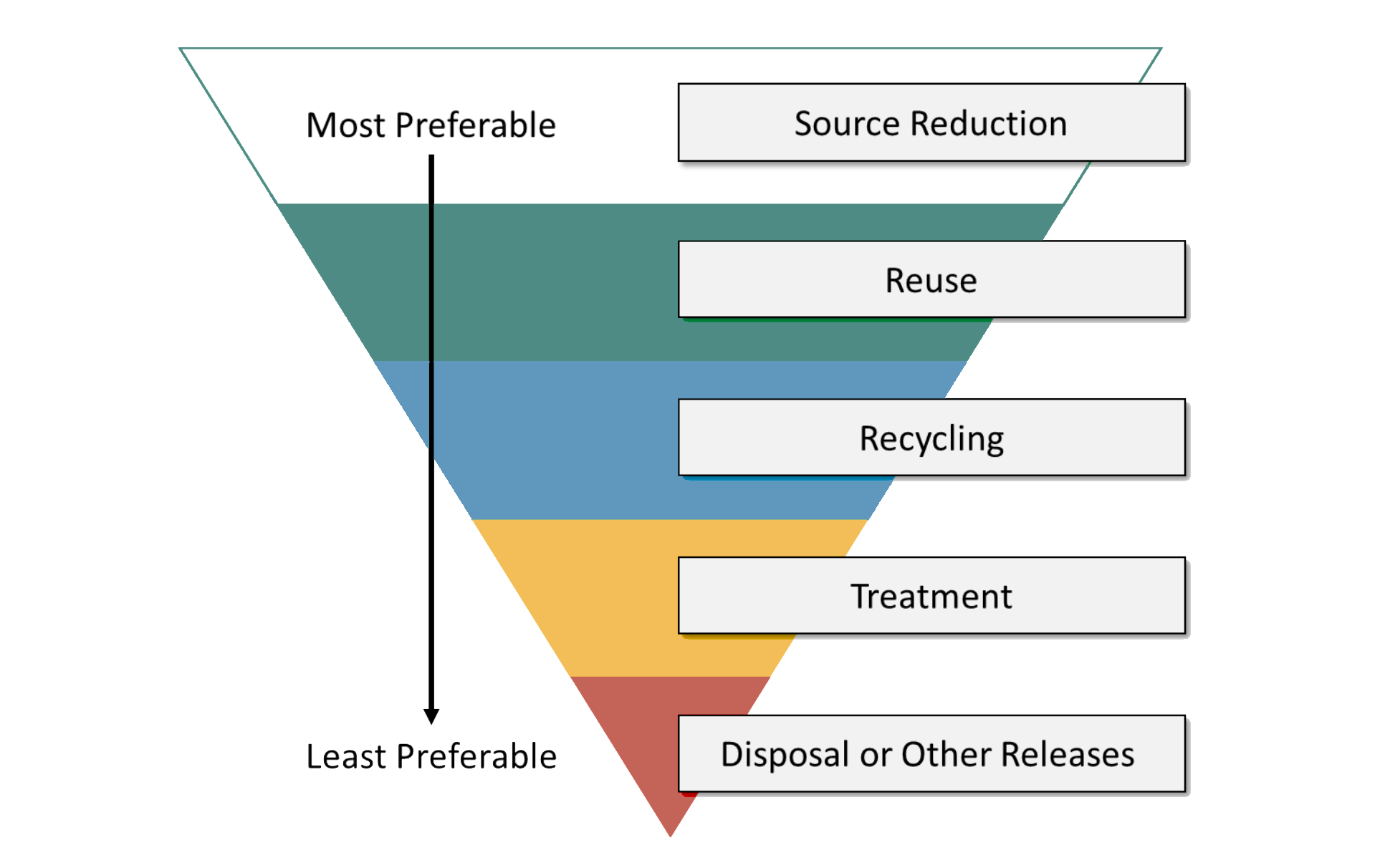P2 Section #1 | Automotive Maintenance - Pg 2

Section 1 | Introduction to P2
Learning Objectives
- Describe the waste management hierarchy
- Identify the difference between source reduction and other waste minimization techniques
- Explain the benefits of pollution prevention
What is Pollution Prevention and Why is it Important?
Pollution prevention (P2) is built on the concept that if wastes are not generated, they do not need to be managed. For every pound of waste generated, there are costs associated with handling that waste. As we saw in the previous lesson, there can be many steps to managing the waste even after it leaves your facility for disposal. P2’s proactive approach aims to take all of this management out of the picture without shifting pollutant release between land, water, or air.
The EPA defines pollution prevention (P2) as, “any practice that reduces or eliminates pollution at its source prior to waste management.” Pollution prevention is synonymous with source reduction as it is the most effective way to prevent pollution. It’s important to note that source reduction is separate from reuse and recycling. This is shown in the waste management hierarchy where source reduction is the most preferable way to enact P2:

Let’s take a look at each section of the waste management hierarchy to understand the differences:
- Source Reduction: The core action of pollution prevention. Source reduction prevents waste from being generated at all. No further processing or handling of the waste is needed.
- Reuse: Uses materials/by-products/waste as is without further processing.
- Recycling: Categorize, sort, and process waste to become usable again.
- Treatment: Treat harmful wastes to avoid detrimental impacts on human health and the environment. Waste that is treated is still destined for disposal.
- Disposal or Other Releases: The waste is headed to a landfill or has been released prior to disposal. These releases include spills and leaks.
Everything but source reduction requires the management of waste. Reducing the management of waste is a clear objective when thinking of P2, but there are other goals that P2 aims to accomplish. These include:
- Eliminating or reducing waste generation
- Reducing the harmfulness of generated wastes
- Conserving natural resources and materials (energy, water, etc.)
- Preventing spills and accidental releases
- Efficiently using raw materials
- Minimizing product losses
You can see here that P2 includes excessive use of materials or resources and is not just focused on waste management. Excessive use of materials or resources can strain natural resources or existing infrastructure. For example, using energy above what’s necessary for your facility means unnecessary pollution is generated to meet that demand.
Successfully implementing P2 at your facility can have many benefits. Those same principles that are meant to reduce or eliminate harmful materials and wastes also protect employees and the environment from exposure to the same materials. P2 can also lead to financial savings through the more efficient use of materials and reduced waste management burden. The P2 perspective helps staff identify opportunities for waste reduction and can also make it easier to meet regulatory requirements as staff are more mindful of where harmful wastes are being generated.
In the next lesson, we’ll look at different P2 techniques that are used to reduce waste at the source.
GUIDES
Implementing P2 > | Spanish >
Inventory Control > | Spanish >
Solvent-Contaminated Wipes >
Used Oil >
Waste Determination >
POSTERS
Clear Walkways > | Spanish >
Clean Workspace > | Spanish >
First-In, First-Out > | Spanish >
Use & Stow > | Spanish >
VIDEOS
Auto Shop Housekeeping>
FIFO for Auto Shops >
What is P2 >
OTHER
P2 in Action >
